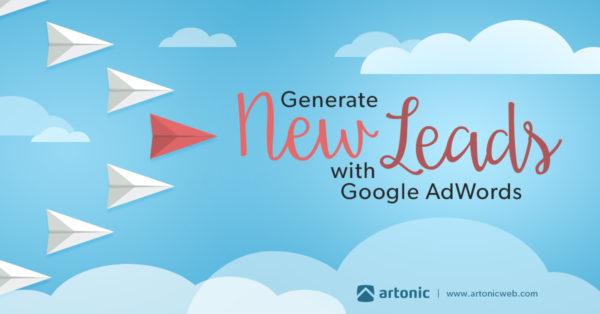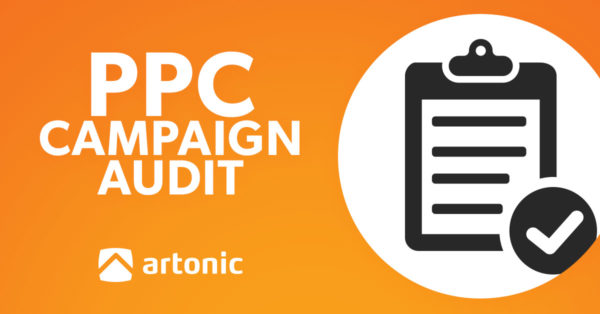If you’re a business owner who relies on a salesperson to sell your product or service, closing the deal is only the last phase of the sales process; to get to this phase, you first must generate leads. And not just any leads, but quality leads. Fortunately, Google AdWords can be a highly efficient way to attract prospects and filter out the “tire-kickers.” In short, it can be your salesperson’s best friend.

What is Google AdWords?
Google AdWords is a form of advertising that allows you to feature ads of your products or services on Google’s search engine results page (among other places).
How AdWords Works:
(1) You pay Google a small advertising fee when a searcher clicks on your ad
(2) Your ad gains visibility on a search engine results page if it is closely related to the word or phrase that someone typed into the Google search box
For these two reasons, Google AdWords can be a very efficient form of advertising. Ideally, your ad only shows to people who are interested in what you’re offering, and you only pay when someone clicks on your ad (hence the term “pay-per-click” advertising, or “PPC” for short).
How Much to Pay Per Click
So, how much do you pay per click? Well, that depends.
AdWords relies on a modified auction process in which you, along with your competitors, bid on “keywords.” Keywords simply tell Google the types of searches (specifically, “search terms”) that you’d like to trigger your ads. Furthermore, keywords can either be closely or loosely related to what someone typed into Google’s search box (you can even specify the sorts of searches you don’t want by using “negative keywords”).
Does that mean that the auction goes to the highest bidder? No.
Google doesn’t want just anyone advertising anything to their searchers. If the person with the deepest pockets could pay their way to the top of Google’s search engine results unchecked, Google would no longer be a source of useful information – it would be a source of spam. Hence, Google takes pains to mitigate low-quality, irrelevant ads from appearing to searchers. If it didn’t, people would likely stop using Google altogether.
Knowing What Works
John Wanamaker, a successful American merchant in the 1800s and early 1900s, said, “Half the money I spend on advertising is wasted; the trouble is I don’t know which half.”
Google AdWords goes a long way towards solving this problem. As a digital form of advertising, you can track and measure a lot, which is super important when return on investment (ROI) is the name of the game.
By coupling the data that Google collects about your advertising campaign(s) with some business sense and intuition, you can begin to paint a picture of the advertising messages, calls to action, types of searches, and, ultimately, the products and services that result in sales. With the right approach, you can figure out what works and what doesn’t, and then apply these insights across all your advertising and sales efforts. In this sense, AdWords’ value lies not only in the clicks and leads you get from searches, but in the information you gain – and that knowledge can be better than gold.
Setting Yourself Up for Success
Not every “lead” is a “qualified” lead, so how do you separate the wheat from the chaff? What does your follow-up process look like? Do you answer the phone and respond to emails in a timely fashion? Are you tuned-in to your prospects’ needs and pain points? How would you handle a sudden influx of inquiries about your products or services? In short, do you have clearly-defined sales process that you’re constantly perfecting?
Keep in mind that process and process improvement is what separates the adults from the kids. Maximizing the lead-generation potential of AdWords requires a commitment to being methodical, persistent, and placing a priority on process. If you’re not process minded, it’s important to find someone who is. Why? Because AdWords is all about marrying process with insights about human emotion and behavior.
Working Your Way Backwards
Once you’ve got the requisite commitment to sales processes, the first step to generate new leads with Google AdWords is to “begin with the end in mind,” then work your way backwards. Start with the closed sale, map out the steps that led up to it, and finish with a clear portrait of your buyer.
In other words, you’ve got to start by dissecting the purchasing behavior and motivations of qualified potential customer – a “decision maker” – who is in buying mode. This person doesn’t need to be convinced to buy. They need to be convinced that you are the right choice. Remember, it takes more effort to both convince someone to buy and convince them that you’re the right choice. Start by focusing on someone who’s ready to buy, and you’ve won half the battle.
Ask yourself: what sorts of questions do they have about your product and service? What problem(s) are they hoping you solve? What sorts of alternatives are they considering to you? How long does it typically take them to make a purchasing decision? And, importantly, how do they typically prefer to reach out to you – phone, email, text message, social media? What are their desires and expectations when it comes to making initial contact?
Fortunately, AdWords excels at capturing what we call this “bottom-of-the-sales-funnel” person who wants to buy, and wants to “Buy. Right. Now.” If you want to generate new leads with Google AdWords, your attention should be on this person at the moment they’re searching.
Talking Their Language
Once you know who you’re talking to, you can tailor messaging around their wants.
Here, one of the most important connection points between you and a buyer is the landing page.
Landing Pages
Basically, a landing page is the place a searcher is directed to after they click on your ad. It’s usually hyper-focused on a specific product or service and is tailor-fit with information that speaks directly to searcher’s core pain points and expectations. Most importantly, a landing page gives a prospective buyer something to do in response to the information you’re providing – a clear call to action.
Process really comes into play here. Guiding a person to take action on a landing page requires establishing a degree of credibility, addressing their emotions and concerns, and not overwhelming them with information. Creating an effective landing page means trial and error. It means A/B testing. It means placing tracking mechanisms on the landing page.
Fortunately, there are tools that make this process easier. At the very least, you’ll want to install Google Analytics on your landing pages and use it to track things like which buttons users click.
(Quick tip: Google Analytics and AdWords can “talk” to each other, which allows you to determine things like which AdWords keywords resulted in various behaviors on your landing page.)
Another tool is Unbounce, which allows you to create landing pages and pit different versions against each other to see which one dominates.
Whatever tools you use, remember: it’s not keywords and ad texts that convert; it’s landing pages. And the time you spend refining your landing pages is time well worth it.
Your Best “Employees”
It’s important to understand that a landing page has a specific “job” to do, but you’ve got other “workers” as well – ad texts and keywords. Ads and keywords are like employees: some perform better than others. Sometimes an employee isn’t performing well because they’re better suited for another job; in this case, changing their context can mean all the difference in the world. In other cases, your “star employees” can’t perform to their fullest potential because you haven’t invested in them enough. And lastly, it’s best to get rid of some employees – and quickly!
AdWords allows you to group ads and keywords into related “themes” using something called “ad groups.” In other words, ad groups allow you to tightly couple specific types of searches with specific types of ads. For example, say I’m running an online clothing store. It wouldn’t make sense to show ads about socks to someone searching for belts. And showing a general ad about your clothing store wouldn’t be nearly as effective as showing an ad highlighting your current discounted belts. With ad groups, I can tell AdWords to only show certain ads with certain keywords, which means that both can operate to their potential.
I’m a huge advocate of the Pareto (80/20) Principle. It simply indicates that a minority of the workers are responsible for most of the results. You’ll want to uncover which keywords generate the best leads, and invest in the best ones. This could mean that you bid most aggressively for your “all-star” keywords; it could also mean that you allocate more of your budget to the ad texts and keywords that count the most. Directing most of your attention and resources on the most important keywords can mean the difference between success and failure in your AdWords lead generation efforts.
Wrapping Up
To generate new leads with Google AdWords, it’ll take both art and science. Without a strategy, you can spend a lot of money quickly with very little to no return on investment. AdWords provides you with lots ways to measure and track your advertising efforts, which allows you to know what works and what doesn’t. But you’ve got to be committed to process.
You’ll need a laser focus on your target market, be able to talk their language through landing pages and ad texts that work, and devote resources to the best ad texts and keywords. Generating leads with AdWords is a broad topic. If you’re ready to dig into the details, we’re ready to help!
Get a Free AdWords Audit
Unsure if your PPC campaign is driving ROI effectively? Want to gauge the effectiveness of your campaign against similar campaigns? We’ll audit your PPC campaign at no cost! Just click the button below:


